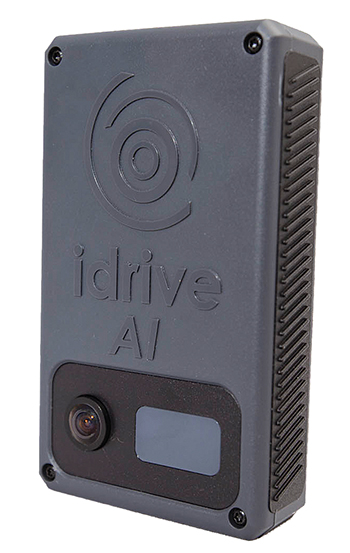
By Sean O’Neil
In today’s transportation environment there are more moving pieces than ever before. Fleet managers have the daunting task of trying to gain insight and visibility into their driver’s behavior and safety in a rapidly changing world. For years now, some form of real-time fleet management software is deployed at nearly every major bus agency and coach company. Often-times basic real-time fleet management software gives just enough information to get by. But managers still need to see deeper – into the driver’s seat – to ensure true safety within their fleet. Fleet management powered by artificial intelligence (AI) is the key to unlocking that deeper insight.
 AI is commonplace and well understood in many forms — advanced surveillance tactics, autonomous driving, and robotics, to name a few newsworthy sectors — but to understand how it can aid in-bus performance, we need to understand real artificial intelligence. To start, not all AI is created equal. In layman’s terms, picture using AI technology with the driving intelligence of a sixteen-year-old driver versus using an AI system with the “knowledge” of an experienced, 30-year veteran bus driver. To achieve that level of intelligence, a massive amount of real-world data is required. At idrive Inc., for example, it took years to run videos (featuring billions of miles driven by professional drivers) through various AI algorithms. In every instance, engineers needed to tell the AI algorithms whether a certain filmed driving behavior was “good” or “bad,” and in this way the AI began to accumulate the knowledge required to improve a bus company’s safety record.
AI is commonplace and well understood in many forms — advanced surveillance tactics, autonomous driving, and robotics, to name a few newsworthy sectors — but to understand how it can aid in-bus performance, we need to understand real artificial intelligence. To start, not all AI is created equal. In layman’s terms, picture using AI technology with the driving intelligence of a sixteen-year-old driver versus using an AI system with the “knowledge” of an experienced, 30-year veteran bus driver. To achieve that level of intelligence, a massive amount of real-world data is required. At idrive Inc., for example, it took years to run videos (featuring billions of miles driven by professional drivers) through various AI algorithms. In every instance, engineers needed to tell the AI algorithms whether a certain filmed driving behavior was “good” or “bad,” and in this way the AI began to accumulate the knowledge required to improve a bus company’s safety record.
So how do you use all this data in an easy and effective way that will help bus companies improve their safety record? The answer is within a dash camera.
Intelligent camera technology
Unlike a video telematics system powered by a standard dash camera, an intelligent camera is essentially an eyeball connected to a thinking brain. An AI-powered dash camera can look at a driver and that driver’s behavior behind the wheel and analyze what that behavior means. AI can analyze both the driver and the road to not only see what the driver was doing but also what they were seeing at the time. Was there a fixed object, a moving object, what was the visibility, was the driver distracted, who was driving and so much more. All these critical data points and information of a driver’s daily routes are crucial to a fleet manager’s success in keeping their drivers safe and protecting their bottom line.
With artificial intelligence, driver behavior analysis becomes even more granular and insightful. A smart camera can analyze a driver’s eyelids to register fatigue — and, further than that, AI can identify specific drivers through facial recognition. With a driver identified by AI there can be no obscurity about who is driving when an event occurs. AI features like fatigue detection and facial recognition, as well as collision and lane-departure warnings, are often found as expensive add-ons for many OEM vehicles and making it un-obtainable for many operators. Currently with the huge leaps in technology, a truly intelligent AI camera can combine all these features into one aftermarket device that can easily be added to an operator’s existing fleet.
Computer vision can now surpass humans in their ability to review videos and assign negative and positive properties to them. Was a driver eating or drinking? Did they have a cell phone? Our research has shown humans can identify these factors with about 82% accuracy (with dash camera data), while an AI-based camera currently exceeds 94-percent accuracy. Having extremely accurate AI data can save fleet managers precious time by analyzing the data for them into easily digestible information.
The data required to improve bus safety with cutting-edge AI is now available, and it is imperative on diligent, safe bus companies to make the leap forward to truly intelligent video analysis.
Sean O’Neil is CEO of idrive, Inc. Visit www.idriveglobal.com for more information.
